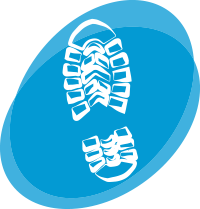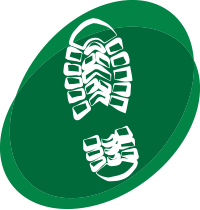We investigate the problem of automatically determining what type of shoe left an impression found at a crime scene. This recognition problem is made difficult by the variability in types of crime scene evidence (ranging from traces of dust or oil on hard surfaces to impressions made in soil) and the lack of comprehensive databases of shoe outsole tread patterns. We find that mid-level features extracted by pre-trained convolutional neural nets are surprisingly effective descriptors for this specialized domains. However, the choice of similarity measure for matching exemplars to a query image is essential to good performance. For matching multi-channel deep features, we propose the use of multi-channel normalized cross-correlation and analyze its effectiveness. Our proposed metric significantly improves performance in matching crime scene shoeprints to laboratory test impressions. We also show its effectiveness in other cross-domain image retrieval problems: matching facade images to segmentation labels and aerial photos to map images. Finally, we introduce a discriminatively trained variant and fine-tune our system through our proposed metric, obtaining state-of-the-art performance.
Cross-Domain Image Matching with Deep Feature Maps

Journal: International Journal of Computer Vision
Published: 2019
Primary Author: Bailey Kong
Secondary Authors: James Supancic, Deva Ramana, Charless Fowlkes
Type: Publication
Research Area: Footwear
Related Resources
Shoeprint Alignment and Comparison using Maximum Cliques
This presentation is from the 107th International Association for Identification (IAI) Annual Educational Conference, National Harbor, Maryland, August 20-26, 2023. Posted with permission of CSAFE.
An algorithm for source identification of footwear impressions—its application on pristine shoeprints and crime-scene like shoeprints
This presentation is from the 107th International Association for Identification (IAI) Annual Educational Conference, National Harbor, Maryland, August 20-26, 2023. Posted with permission of CSAFE.
CSAFE Project Update & ASCLD FRC Collaboration
This presentation highlighted CSAFE’s collaboration with the ASCLD FRC Collaboration Hub.
Source identification of shoeprints in mock crime scene using an algorithm based on automatic alignment
This presentation is from the 75th Anniversary Conference of the American Academy of Forensic Sciences, Orlando, Florida, February 13-18, 2023. Posted with permission of CSAFE


